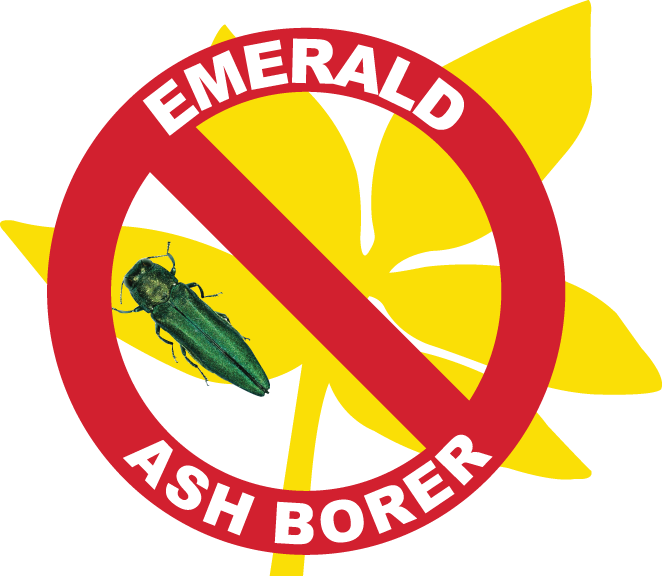Control the Destructive Path of the Emerald Ash Borer (EAB)
According to Emerald Ash Borer Information Network, the EAB is an invasive species of beetle that was first discovered near Detroit in the summer of 2002. The EAB has left a graveyard of dead ash trees standing in its destructive wake, and now it’s here in Dallas/Ft. Worth. There are some things that everyone can do to help protect the native ash trees.

Know the signs and symptoms of an infested tree.
According to the USDA, the signs and symptoms that an ash tree might be infested are:
- Yellow, thin or wilted foliage
- Unusual woodpecker presence and pecking holes
- D-shaped beetle exit holes
- Shoots growing from roots or a tree’s trunk, often with larger-than-normal-leaves
The adult EAB is a metallic emerald green beetle that is about ½-inch long. The D-shaped holes in the ash’s bark are made when the adults emerge from the tree to mate. The adults cause little harm to the tree because they mostly nibble on foliage. The larvae feed on the living section of the tree and can be found just under the bark. The telltale sign that the tree has been infested is the S-shaped pattern that the larvae make as they feed, inhibiting the tree from moving water and nutrients up the trunk. Each worm is about an inch long and resembles a tapeworm; the body of mature larvae is white with defined segments.
Don’t move firewood.
Lumber and firewood movement are the two main modes of travel that have caused the EAB to spread so far and wide. Unintentionally, people move wood that has been infested and the adults emerge in a different area. The adults emerge to mate and lay eggs in a new sector of ash trees, and once the larvae hatch, they begin killing the new forest of ash trees.
Get infested trees treated or removed.
If you suspect that your ash tree is infested, call a certified arborist. The arborist will be able to confirm if it is the EAB and will provide you with the next steps that can be taken. Removal is not the only option if the tree contains Emerald Ash Borer larvae. If discovered early enough, a medicament could save the tree. There are a few options for treatments: spraying, drenching, and trunk injection. More information about these treatments can be found here.
